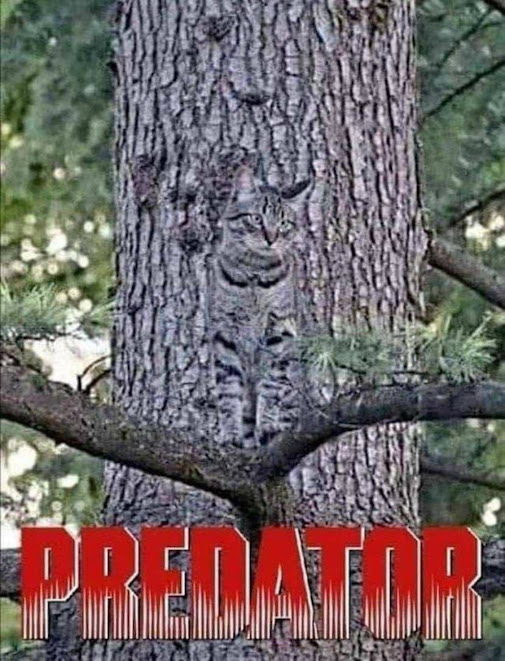Starting back in July 2022, I used to explore from time to time a restaurant that went out of business and was abandoned in 2015. They put up a green sheet-metal wall around it, but the green door in the wall was never locked, and you could just walk in. See "Owl time, and cold noodles," "The Green Door," and "Phoenix syncs."
This past Sunday (January 21), I happened to pass the abandoned restaurant and decided that I would go back that night and explore it again. I ended up getting sidetracked and not going, though. Then on Monday I found this:
That's right, nearly a decade after going out of business, the restaurant is finally
closed. I'm quite sure the lock was not there when I passed it on Sunday, so I'm not sure if I should feel disappointed that I missed my last chance to explore or lucky that I wasn't inside when they locked it up!
I don't know what prompted someone to lock the place up now, after nine years. I was hoping it would be a combination lock, since they're obviously not going to open it very often and would thus have set it to something easy to remember and therefore easy to guess. No such luck; it's a key lock.
Oddly, I had just been thinking about keys on Sunday. Earlier this month, after more than a year of praying the Rosary every day, I decided to stop for a while just to see what would happen and to prove to myself that it hadn't become a superstitious compulsion. The main effect I noticed was that syncs stopped as if turned off with a tap. (I wish I'd known that trick back when I was trying to make new syncs stop for a while!) On Sunday, I took up the Rosary again after my break, and the sensation was remarkable. The beads felt like a living thing in my hands, and I could feel my mind sliding into a subtly but distinctly different mode of consciousness. I thought to myself, "It's magic!" and was immediately answered by a mental voice in my head, a woman speaking French: Oui, c'est l'une des clés. "Yes, this is one of the keys."
The voice reminded me of the woman in the dream recounted in "Rapunzel and the True Song of Wandering Aengus." That woman had spoken English, but I had understood that she wanted me to think of her as Claire Delune, and l'une des clés (the final s's are silent) sounds almost like clair de lune in reverse. That dream had prominently featured the Yeats lines "The silver apples of the moon, / The golden apples of the sun," and that combined with "one of the keys" made me think of the gold and silver keys that were recently in the sync-stream. If the Rosary is one of the two keys, what's the other?
This train of thought led me to do a word search for key in the Book of Mormon. Somewhat surprisingly, given that "keys" would become, so to speak, a key concept in Mormonism as it later developed, there is only one mention in the BoM, and it's quite literal:
And as I went forth towards the treasury of Laban, behold, I saw the servant of Laban who had the keys of the treasury. And I commanded him in the voice of Laban, that he should go with me into the treasury. . . . And I also spake unto him that I should carry the engravings, which were upon the plates of brass, to my elder brethren, who were without the walls (1 Ne. 4:20, 24).
The next day, when I discovered that I would now need a key to get into the abandoned restaurant, I remembered a dream I had had on August 26, 2023, recorded in "Phoenix syncs":
Remember the abandoned restaurant I explored in July 2022? I recently had two dreams set in an environment resembling that restaurant, a long-abandoned building where everything was covered with dead leaves. On the night of August 26, I dreamed that I was searching such a building with my brother, trying to find "plates" -- meaning further records like the Golden Plates from which the Book of Mormon was produced.
I was with my brother, trying to get plates -- exactly the circumstances surrounding the Book of Mormon's one and only mention of keys.
Then I remembered that in September 2022 (see the comments to "Dreams, shifty-eyed owls, and the white Starbucks cup") I had actually dreamed about a rosary being a literal key. Not until I looked it up just now did I remember that this was in the context of exploring an abandoned building:
I’ve just remembered a fourth dream vignette, in which I was exploring an old abandoned building and found in it a very large wooden rosary. Each bead was the size of a golf ball and had a single word engraved on it. I believe the words were those of the Lord’s Prayer. I found that the cross on the rosary was also a key which fit the lock of one of the doors in the old building. I left the rosary hanging from the keyhole, but an old priest came and told me not to, saying a key has no purpose if you just leave it in the keyhole.
Could this possibly be a garbled precognition? If you look back up at the photo of the locked door, you'll see that the lock is attached to a chain, superficially similar to a string of beads. If I were to unlock the padlock and leave the chain hanging, it would look a bit like "the rosary hanging from the keyhole" in the dream. In the dream, I found the rosary/key in the abandoned building. Is it possible that whoever locked up the restaurant left the key hidden somewhere nearby and that I could find it? Only one way to find out.
⁂
Note added (Jan. 24): In the above post I describe how my rosary beads "felt like a living thing in my hands," prompting me to think, "It's magic!" At the end of the post, I say that a metal chain is similar to a string of rosary beads. The next day, I was reading The Magician, the fifth book in Colin Wilson's Spider World series. Several pendants on gold chains have been discovered which seem to have mysterious powers. Niall, the human protagonist, takes two of them to Steeg, an artificial intelligence, who promptly destroys them, saying that he has discovered "that these devices can be animated with some kind of living force" and are therefore extremely dangerous. Steeg then reprimands Niall for focusing on the pendants themselves and ignoring the chains.
"But I didn't think the chains made any difference."
"That is what you were intended to think. In fact, they are part of the device."
"I'm sorry."
"That is unnecessary. Now that we understand the danger, it is possible to anticipate it."
Niall said: "But do you understand how it works?"
"No. I said I understand the danger. But since I am designed for purely rational thinking, I am unable to understand the principles of magic."
The words caused a prickling sensation in Niall's scalp. "But are you sure it is magic?"
"The ability to make living forces manifest in dead matter must be defined as magic."
This parallels very closely what I wrote about the rosary the day before I read it. When "living forces manifest in dead matter" -- when what ought to be an inanimate object feels as if it were alive -- that's magic. My seemingly living matter was a rosary; Niall's was a metal chain -- something which I had explicitly compared to a rosary in my post.
Niall very naturally but incorrectly assumes that only the pendant has any power and that the chain is just a chain. Likewise, someone unfamiliar with a rosary would naturally focus on the crucifix and think of the string of beads from which it depends as incidental, when in fact the beads are the main thing.










































